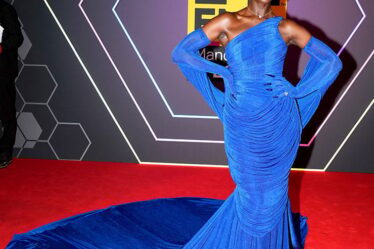
Amazon is like a dog with a bone when it comes to beauty, and Shopbop, the e-commerce giant’s high-end fashion website, is the latest vehicle it’s using to try and make its imprint on the category.
Amazon desperately wants to be taken seriously in beauty, and despite people buying nearly everything else from the platform, the biggest retailer in the world continues to face two major obstacles: consumers are hesitant to buy high-end beauty (or apparel) on Amazon. And as a result, high-end brands are wary of selling there, fearing that they will be seen as less luxurious. Among its numerous attempts to get into the prestige beauty market was an underwhelming partnership with Lady Gaga’s Haus Labs (the brand relaunched as a Sephora exclusive earlier this year).
Now, Amazon is trying again, minus the Amazon name. Shopbop debuted beauty this week with a range of mostly prestige labels, including Dr. Barbara Sturm, Augustinus Bader, Costa Brazil and Vintner’s Daughter, which sell $300 serums and $100 body creams.
To coincide with the launch, Shopbop’s homepage, as of Tuesday morning, features a beauty takeover. It’s the picture of youth and diversity: models with (what appears to be) foundation-free complexions and eyelids painted in bright blue, purple, orange and pink. It’s showcasing the modern, undone way to wear makeup now — a very Gen-Z look that’s distinctly different from the dramatic styles made popular by Millennial beauty YouTubers.
It’s obvious that the e-tailer is trying to attract a young customer, but most of the products it’s selling are too expensive for people in their teens or mid-twenties.
What’s really going on here?
The move is likely not solely about Amazon building a presence in prestige beauty. Now that its competitors have entered the space, Shopbop may not want to be the only premium apparel and accessories destination online without its own beauty offering.
Shopbop is the third high-end fashion e-tailer to get into beauty this year. In May, Moda Operandi announced plans to introduce beauty later this fall and in April, Farfetch debuted an ambitious three-pronged beauty strategy. Farfetch operates a luxury marketplace, sells beauty in brick-and-mortar via London department store Browns, which it acquired in 2015 and is incubating brands with New Guards Group’s beauty arm, NGG Beauty (Off-White’s fragrance line “Paperwork,” which was released in May, was the first NGG Beauty project).
Luca Solca, head of luxury goods research at Bernstein, told me beauty is most interesting to multi-brand fashion marketplaces and retailers like Shopbop and Farfetch because of the site traffic it generates.
“Beauty is a category consumers buy often, [and] if you manage to leverage that traffic and promote other categories like fashion, this can provide a good tailwind to GMV [gross merchandise value] growth,” Solca said.
In terms of generating traffic, beauty is a go-to for e-tailers over jewellery – a more obvious complement to fashion, but with far less opportunity. Jewellery is the “polar opposite” of beauty because it has a “significantly higher average value, but significantly lower frequency of purchase,” he explained.
Shopbop’s approach to the category (as well as that of Moda Operandi and even Net-a-Porter) is not dissimilar to what Walmart is doing.
Last year, the big box store brought in over 100 beauty brands, many of them targeted towards Gen-Z. Walmart isn’t trying to become the leading beauty destination – it’s taking advantage of its standing as the US’s largest retailer. The strategy looks something like, “Millions of people are here every day to buy something else, so how do we get them to buy into this other category that has low returns and high rates of replenishment?”
That’s even the case at Farfetch, which had an extremely splashy and expensive launch with its acquisition of Violet Grey and buy-in from a number of very fancy brands including Chantecaille and Westman Atelier. But ultimately, unless you’re Sephora or Ulta Beauty, makeup or skin care products are just the other thing you add to your cart.
To an extent, Shopbop is doing this, too. The e-tailer isn’t taking on no-name brands; most of the beauty lines it’s carrying already have high brand awareness or some interest surrounding them, like Dr. Barbara Sturm or Vintner’s Daughter. Whether or not it will actually comprise a meaningful part of the business is less important.
The goal is that that if someone is spending hundreds or thousands of dollars on apparel or shoes, they may also be compelled to buy a $38 Kevyn Aucoin blush, or best case, a $280 “The Cream” from Augustinus Bader — since they’re already there, of course.



